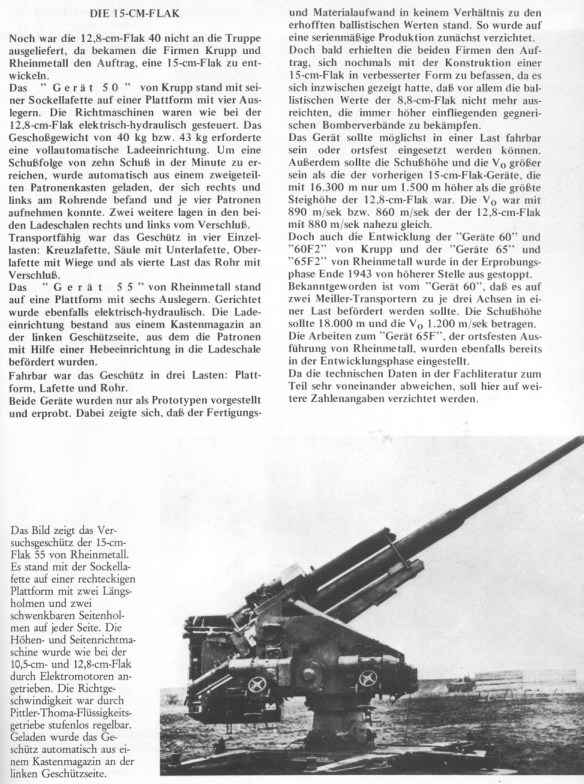
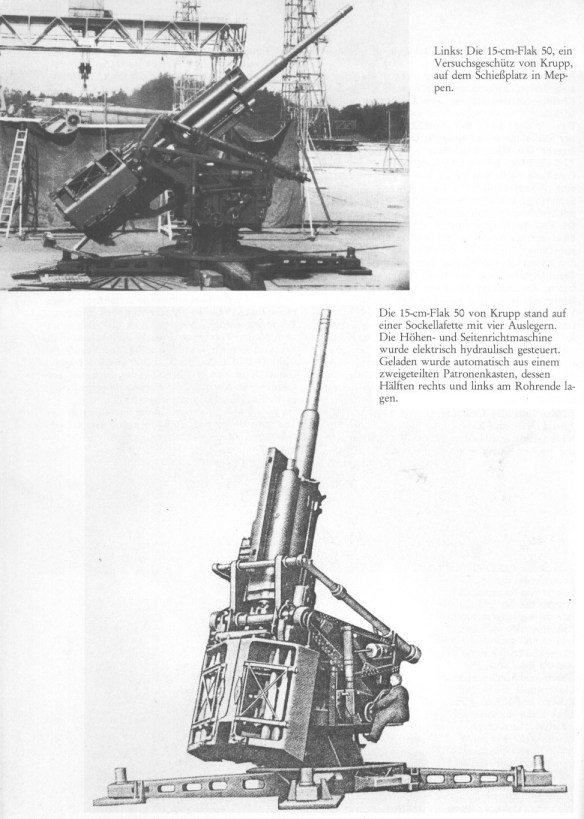
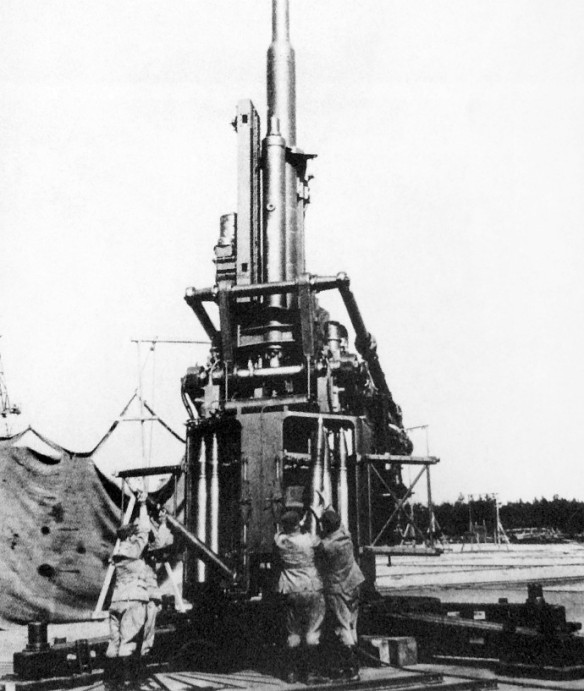
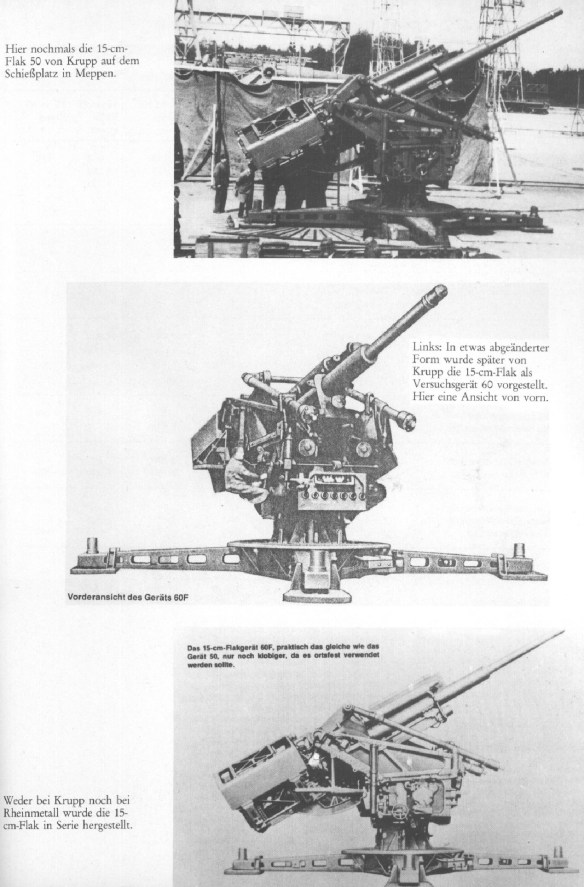
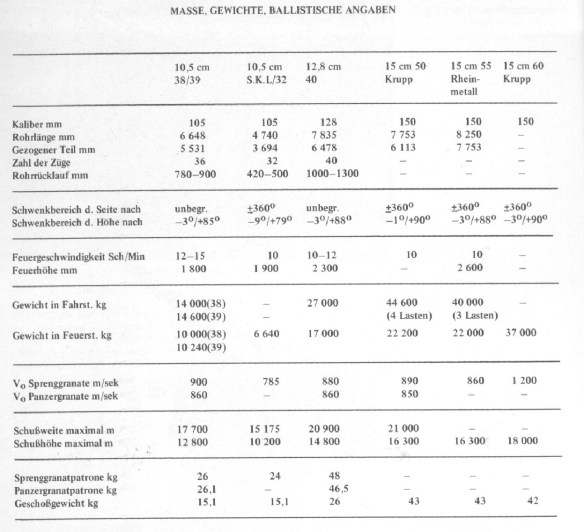
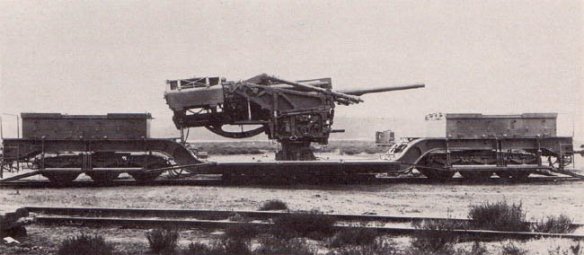
15cm Gerät 50 on Railway Car.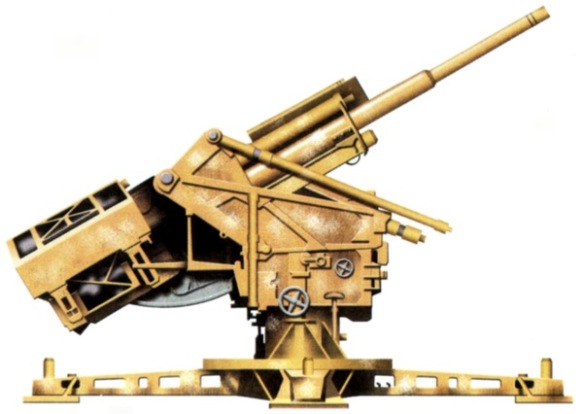
The initial urban flak towers were actually designed to take four single 15 cm guns of a model which was never approved for service, but was tested.
At least four different designs were considered, this is the 15 cm Gerät 50 with on mount autoloader refilled manually in-between bursts, of the others less is known as they were later and didn’t get as far. With a weapon like this a totally fixed position makes a bit of sense, for 128mm, you could still tow that if you wanted in two pieces and railroad cars provided ample mobility for defending industrial centers. Certainly more mobility than a gun on a tower! The 15cm guns weighed more than Panzer IV tanks and could never have been more than ‘re-locatable’.
15 cm Flak Gerät 50
15 cm Flak Gerät 55
15 cm Flak Gerät 60
15 cm Flak Gerät 60F
German title: Gerät 50
Calibre: 149.1 mm
Barrel length: 7753 (L/52)
Rifled barrel length: 6113 mm
Shipping Weight: 44,600 kg (shipment in 4 parts)
Weight own weapons (without chassis): 32 000 kg
Bearing: -1 ° 30 ‘+90 °
Traverse: 360 °
Muzzle velocity: 890 m / s
Missile Weight: 40 kg
Range: 16,300 m (height)
Rate of fire: 10 rounds per minute
Manufacturer: Krupp AG, Essen
The design was commissioned as a backup project Rheinmetall (Gerät 55) in 1936. Work was halted in January 1940.
#
Krupp constructed 15 cm Gerät 60 from October 1942. It was further developed only as stationary 15 cm Gerät 60F (fest – fixed), with even higher performance. Gerät 60 could be transported in accordance as one charge, for two three-axle trailer Meiller type ammunition and fired from it, with a mass of 42 kg reached a muzzle velocity of 960 m / s. The prototype Gerät 60F having upgraded fire control, which is externally very similar to Gerät 50, throwing up a projectile at a speed of 1200 m / s to a height of 18,000m. It had a barrel with a lifetime calculated as 86 shots. Further work on anti-aircraft guns of caliber 15 cm were suspended in September 1943.
Heavy anti-aircraft gun 15 cm Gerät 55 was developed in the company Rheinmetall based on a complex requirement in 1936 with the companies Krupp and Rheinmetall. Prototypes were ready for testing in September 1938 – it turned out that the growth in performance and the likelihood of destruction in comparison with antiaircraft guns of the caliber 12.8 cm is insignificant and disproportionate to the increase in mass and size of the weapon, so that it did not justify the expenditure on their production.
15 cm Gerät 55 originated in a straight line from earlier heavy anti-aircraft guns Rheinmetall, 10.5 cm Flak 38 and 12.8 cm Flak 40, being virtually enlarged version of the latter. The weapon rested on a bed in a rectangular lower bead plate with six short tails – two fixed longitudinal and four folding to the side side. The barrel was guided to the target by a mechanism powered by electric motors with variable speed hydraulic gearbox – Pittler-Thoma – positioned on the right side of the upper bed, in an emergency situation, it was possible operate the gun manually with double cranks. The fire solutions used the Übertragungsgerät-pointer 37. On the left side of the upper bed was built at the rear of the ammunition store with automatic feeding device, similar to these prototypes.
15 cm Gerät 55 was transported in three parts – the base platform, bed and barrel.
In 1940, due to insufficient performance of existing weapons both companies were re-commissioned, based on previous work, to the development of cannons caliber 15 cm, but with improved performance – projectile with a mass of 42 kg to reach had a muzzle velocity of 960 m / s and it has had to be transported without the need to break down for parts. On the basis of these specification Rheinmetall has developed 15 cm Gerät 65, which on the basis of yet again changed requirements from October 1942 was developed further in a fixed 15 cm Gerät 65F (Fest – fixed) capable of firing missiles with a muzzle velocity of 1200 m / s at the height of 18,000 meters.
The prototype barrel to 15 cm Gerät 65 was ready in 1942, in August 1943 was completed barrel, and a bed prototype Gerät 65 F. Further work on the caliber antiaircraft guns of 15 cm was halted in September 1943, and existing weapons were used only for ballistic testing. Conducted in 1941, design work on even greater anti-aircraft gun 24 cm Gerät 85 was halted on Aug. 14, 1943.